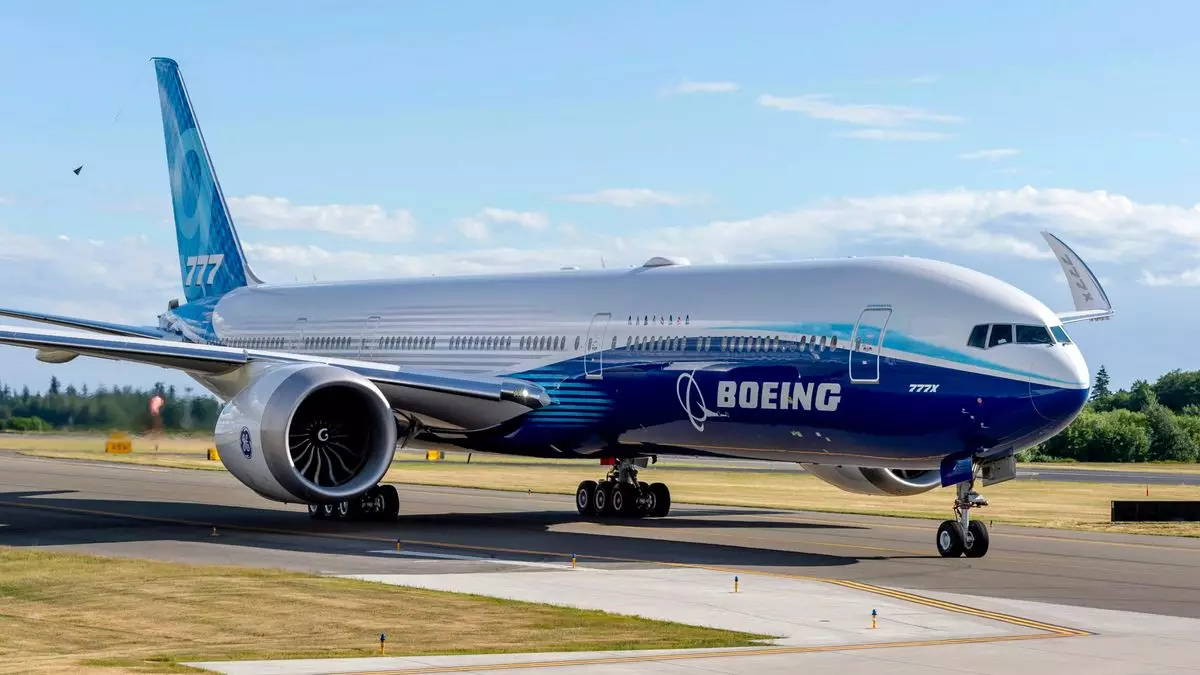In a significant move that signals deeper troubles within its operational framework, Boeing has announced plans to lay off approximately 17,000 employees, which constitutes nearly 10% of its global workforce. This follows a troubling trend of financial losses that have surpassed $25 billion since 2019 and the ongoing disruptions stemming from a protracted strike involving about 33,000 union machinists. The announcement made by newly-appointed CEO Kelly Ortberg on October 11, highlights a drastic shift in corporate strategy as the aviation giant grapples with an unrelenting combination of production challenges and financial instability.
The layoffs will not only affect lower-level employees but also impact executives and managers across levels. For a company of Boeing’s stature, this kind of restructuring is emblematic of extreme rationalization efforts in response to operational inefficiencies and declining cash flow.
A critical factor contributing to Boeing’s current plight is the ongoing labor strike that commenced on September 14. With union negotiations failing to yield positive outcomes, the strike has halted production on Boeing’s most lucrative models, including the 737 Max, 777, and 767, exacerbating an already precarious financial situation. The company’s decision to file a charge of unfair labor practices against the International Association of Machinists and Aerospace Workers further illustrates the contentious atmosphere surrounding labor relations at Boeing.
The strike not only disrupts labor but also severely impacts cash flow; payments for delivered aircraft are a primary revenue source. Thus, the halt in production translates to an immediate cash burn, reported at $1.3 billion for the third quarter alone, leading to a substantial loss of $9.97 per share. For a company teetering on the edge of financial disaster, each day without production has severe ramifications.
As the layoffs loom, Boeing is delaying the rollout of its highly anticipated 777X model to 2026, pushing back timelines and potentially costing the company further market share. Boeing has also announced the cessation of cargo versions of its 767 model by 2027, a decision that underscores the pressing need to streamline its operations. The financial outlook continues to darken with reports revealing substantial write-downs across various sectors, including the civilian and defense programs.
Boeing’s third-quarter preliminary results show a grim reality—analysts estimated a narrower loss of $1.61 per share, suggesting a disconnect between analyst expectations and the actual performance, likely due to unforeseen write-downs tied to delays and cost overruns. These financial strains reinforce the notion that unless Boeing can effectively navigate its internal and external challenges, it may face further financial deterioration.
Kelly Ortberg’s ascension as the third CEO in less than five years comes with its share of challenges. His outsider status in the firm adds another layer of complexity as he must tackle not only the immediate financial issues but also long-standing internal dysfunctions. With increasing scrutiny from the Federal Aviation Administration (FAA), especially following safety-related concerns linked to the 737 Max model, Ortberg’s leadership will be heavily scrutinized by stakeholders and the public alike.
The prior leadership’s failures in addressing safety issues and production reliability led to profound public distrust. Furthermore, the scrutiny intensified after NASA’s decision to halt the use of a Boeing spacecraft for astronaut returns, casting further shadows over Boeing’s safety record. The burden of rectifying these reputational and operational deficiencies falls squarely on Ortberg’s shoulders.
The road ahead is undeniably rocky for Boeing. As the company continues to face a multifaceted crisis involving labor negotiations, financial instability, and a tarnished brand, the need for a robust strategic pivot is imperative. Ortberg’s declaration that “tough decisions” must be made could be a precursor to additional restructuring efforts needed to stabilize the company’s operations.
Boeing stands at a critical juncture, where the choices made in the coming months will dictate not only its recovery strategy but also its long-term future in the aerospace industry. Addressing the labor concerns, financial discrepancies, and restoring public trust will be pivotal in determining whether Boeing can soar back to a position of market leadership.


Leave a Reply